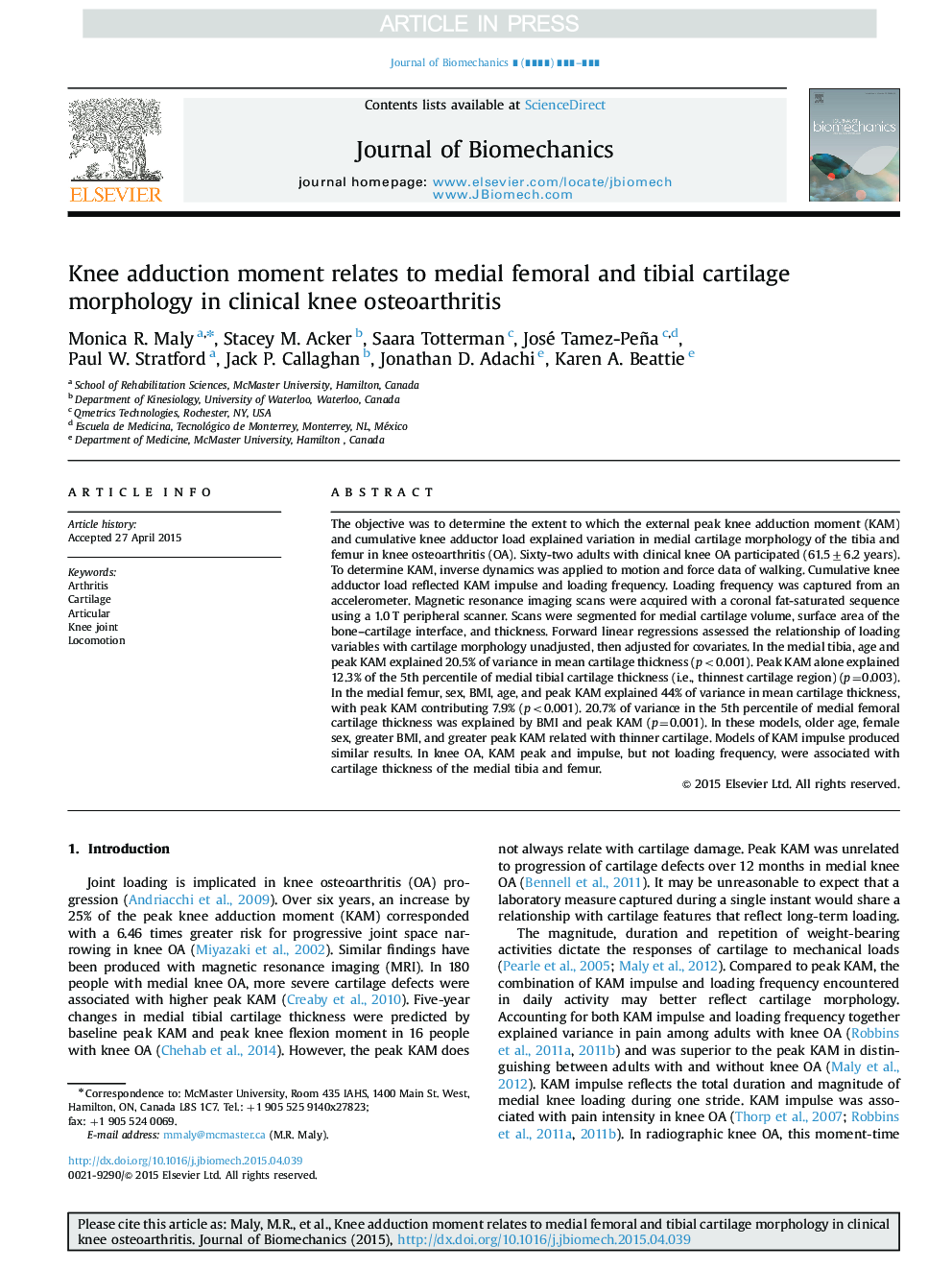| کد مقاله | کد نشریه | سال انتشار | مقاله انگلیسی | نسخه تمام متن |
|---|---|---|---|---|
| 10431335 | 910211 | 2015 | 7 صفحه PDF | دانلود رایگان |
عنوان انگلیسی مقاله ISI
Knee adduction moment relates to medial femoral and tibial cartilage morphology in clinical knee osteoarthritis
ترجمه فارسی عنوان
لحظه تزریق زانو مربوط به مورفولوژی غضروف فمورال و تیبیا در استئوآرتریت بالون زانو
دانلود مقاله + سفارش ترجمه
دانلود مقاله ISI انگلیسی
رایگان برای ایرانیان
کلمات کلیدی
آرتروز، غضروف، مفصل، مفصل زانو، حرکت
موضوعات مرتبط
مهندسی و علوم پایه
سایر رشته های مهندسی
مهندسی پزشکی
چکیده انگلیسی
The objective was to determine the extent to which the external peak knee adduction moment (KAM) and cumulative knee adductor load explained variation in medial cartilage morphology of the tibia and femur in knee osteoarthritis (OA). Sixty-two adults with clinical knee OA participated (61.5±6.2 years). To determine KAM, inverse dynamics was applied to motion and force data of walking. Cumulative knee adductor load reflected KAM impulse and loading frequency. Loading frequency was captured from an accelerometer. Magnetic resonance imaging scans were acquired with a coronal fat-saturated sequence using a 1.0 T peripheral scanner. Scans were segmented for medial cartilage volume, surface area of the bone-cartilage interface, and thickness. Forward linear regressions assessed the relationship of loading variables with cartilage morphology unadjusted, then adjusted for covariates. In the medial tibia, age and peak KAM explained 20.5% of variance in mean cartilage thickness (p<0.001). Peak KAM alone explained 12.3% of the 5th percentile of medial tibial cartilage thickness (i.e., thinnest cartilage region) (p=0.003). In the medial femur, sex, BMI, age, and peak KAM explained 44% of variance in mean cartilage thickness, with peak KAM contributing 7.9% (p<0.001). 20.7% of variance in the 5th percentile of medial femoral cartilage thickness was explained by BMI and peak KAM (p=0.001). In these models, older age, female sex, greater BMI, and greater peak KAM related with thinner cartilage. Models of KAM impulse produced similar results. In knee OA, KAM peak and impulse, but not loading frequency, were associated with cartilage thickness of the medial tibia and femur.
ناشر
Database: Elsevier - ScienceDirect (ساینس دایرکت)
Journal: Journal of Biomechanics - Volume 48, Issue 12, 18 September 2015, Pages 3495-3501
Journal: Journal of Biomechanics - Volume 48, Issue 12, 18 September 2015, Pages 3495-3501
نویسندگان
Monica R. Maly, Stacey M. Acker, Saara Totterman, José Tamez-Peña, Paul W. Stratford, Jack P. Callaghan, Jonathan D. Adachi, Karen A. Beattie,
